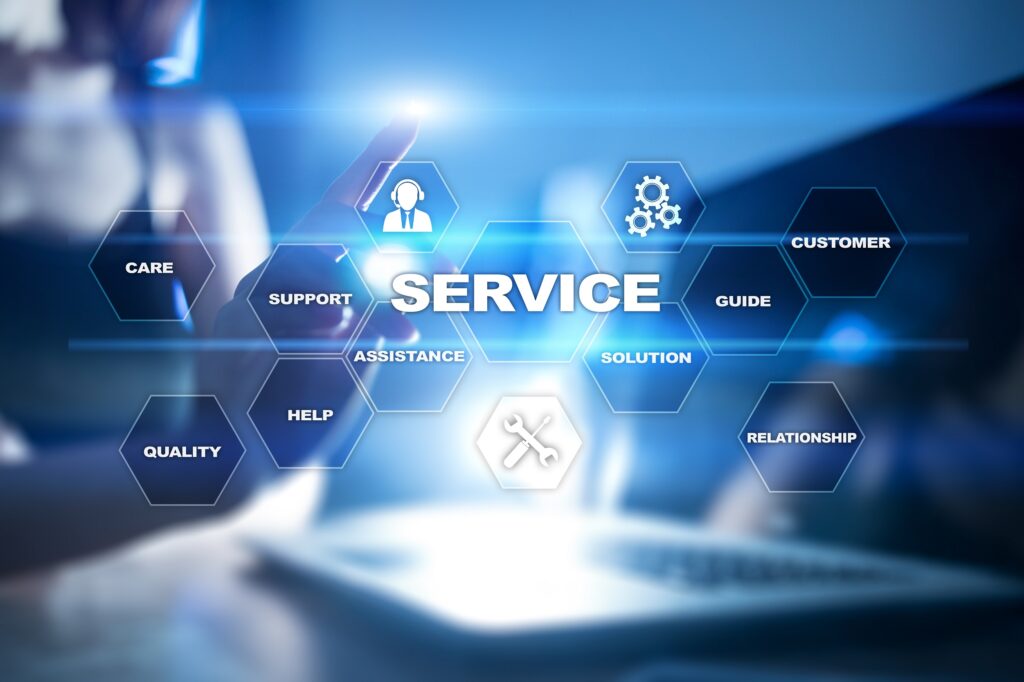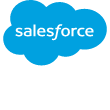Implementing customer self-care portals for cloud and communications with Salesforce

Self-care portals are an important element of digital transformation and Quote-to-Cash (QTC or Q2C).
They can interact with clients, employees, partners and other target groups. For example, cloud and communications providers may want to enable a different digital experience for:
- Business vs. residential customers,
- Wholesale vs. retail customers,
- Direct customers vs. resellers.
Providers using Salesforce and looking to start digital transformation or improve existing experience, have the following choices for portal implementations:
- Use Salesforce Experience Cloud (f.k.a. Community Cloud or Communities), which enables building CRM-powered sites, portals, forums, apps, and more.
- Develop a portal integrated with Salesforce via the API in any traditional programming language such as node.js or Java (“traditional portal”)
- Purchase and customize an off-the-shelf, pre-built portal using one of the options above.

Considerations
Which systems does most of the portal information come from?
When Salesforce is used for large portions of QTC such as CPQ, customer service, order processing and others, it may turn out that it will be the primary data source for the portal. In that case, it may make sense to implement it using the Experience Cloud and consolidate data from other systems there.
How many and what systems are integrated in the portal?
Traditional programming languages offer more flexibility in terms of systems integration. When portals source data from multiple systems with various APIs, most likely a traditional approach will give better results.
For cloud and communications providers, Salesforce may play a significant role within BSS (Business Support Systems); however, information from many OSS (Operational Support Systems) such as network monitoring, virtualization or SD-WAN management will have to be integrated as well.
Speed of development / time-to-market
Salesforce development is configuration-driven to a large degree, and as such is usually faster than traditional programming languages. When time-to-market is essential, Experience Cloud is most likely the best solution. For example, a simple reseller portal showing services sold and associated commissions with the ability to open support cases will be easy to build with Experience Cloud in a few weeks’ time (provided that all required data is already in Salesforce).
A mixed approach can also be taken with basic functionality quickly delivered using Experience Cloud and then followed by a more robust portal in node.js.
Leveraging pre-built functionality
Experience Cloud offers a lot of pre-built components like user forums, knowledgebases, etc. which can be quickly leveraged.
User Interface (UI) flexibility
Even though highly customizable, Experience Cloud does not match traditional programing languages with modern front-end frameworks like Angular in terms of UI flexibility and agility.
Number of users
Finally, Experience Cloud requires recurring per-user licenses while traditional portals do not. For large amounts of users and relatively low ARPU per user, Experience Cloud may not be the best option cost-wise.
Traditional portal vs. Experience Cloud
The following matrix can be used to help make the choice:
| Situation | Recommended Solution |
|---|---|
| Majority of portal data comes from Salesforce.
There are few (e.g., one or two) additional systems that need to be integrated. It would be beneficial to see some data from these systems in Salesforce. Example: Salesforce is used for CRM, CPQ and order management, but Atlassian JIRA is used for customer support. |
Experience Cloud |
| Many disparate systems such as SD-WAN directors, monitoring systems, etc. feed the portal.
Example: Salesforce is used for service inventory (term, product, etc.) but service elements (routers, CPE devices) are in a separate asset inventory and are monitored by the NMS system. |
Traditional Portal |
| Portal users access a lot of Salesforce data without any transformation. | Experience Cloud |
| Real-time updates are required. | Traditional Portal |
| Usual, standard portal functionality (knowledgebase, chat, forums, etc.), constitute about 80% of overall portal functionality. | Experience Cloud |
| Portal is using many custom, business-specific UI elements like charts, performance metrics, etc. | Traditional Portal |
| Salesforce is deemed as a platform/hub around which business functionalities will be built in the future. | Experience Cloud |
Experience Cloud pros & cons
Pros:
|
Cons:
|
Traditional portals pros & cons
Pros:
|
Cons:
|
Conclusions
Many factors determine choice of portal and digital transformation technology for cloud and communications providers and one-size certainly does not fit all.
For example, a residential broadband provider will have a simpler portal than a B2B SD-WAN or MPLS provider with rich network visualization and self-care capabilities.
Nextian offers Experience Cloud-based customer and reseller partner portals, but also develops portals in other technologies (Java, Node.js, Angular, React) featuring Salesforce integration.
Nextian is a vendor of Quote-to-Cash (QTC) software for cloud and communications helping providers accelerate growth and increase customer lifetime value.
Contact us today to find out how we can help you!
Related posts
2024 telecommunications industry trends in quote-to-cash
Learn about 2024 telecommunications industry trends: shift towards software, digital experience, automation, API-fication and AI & algorithms.
Increasing sales velocity for cloud & communications services
Increase sales velocity of cloud and communications services and quickly generate revenue with rapid quoting, automated renewals and omni-channel sales.
Subscription service contract renewals for cloud & communications
Learn how to leverage Nextian for automated subscription service contract renewals with a high success rate and reduced month-to-month revenues.
GET THE NEXTIAN ADVANTAGE
We help enterprises increase revenue, profitability and gain efficiencies by realizing the full potential of the Salesforce platform.




